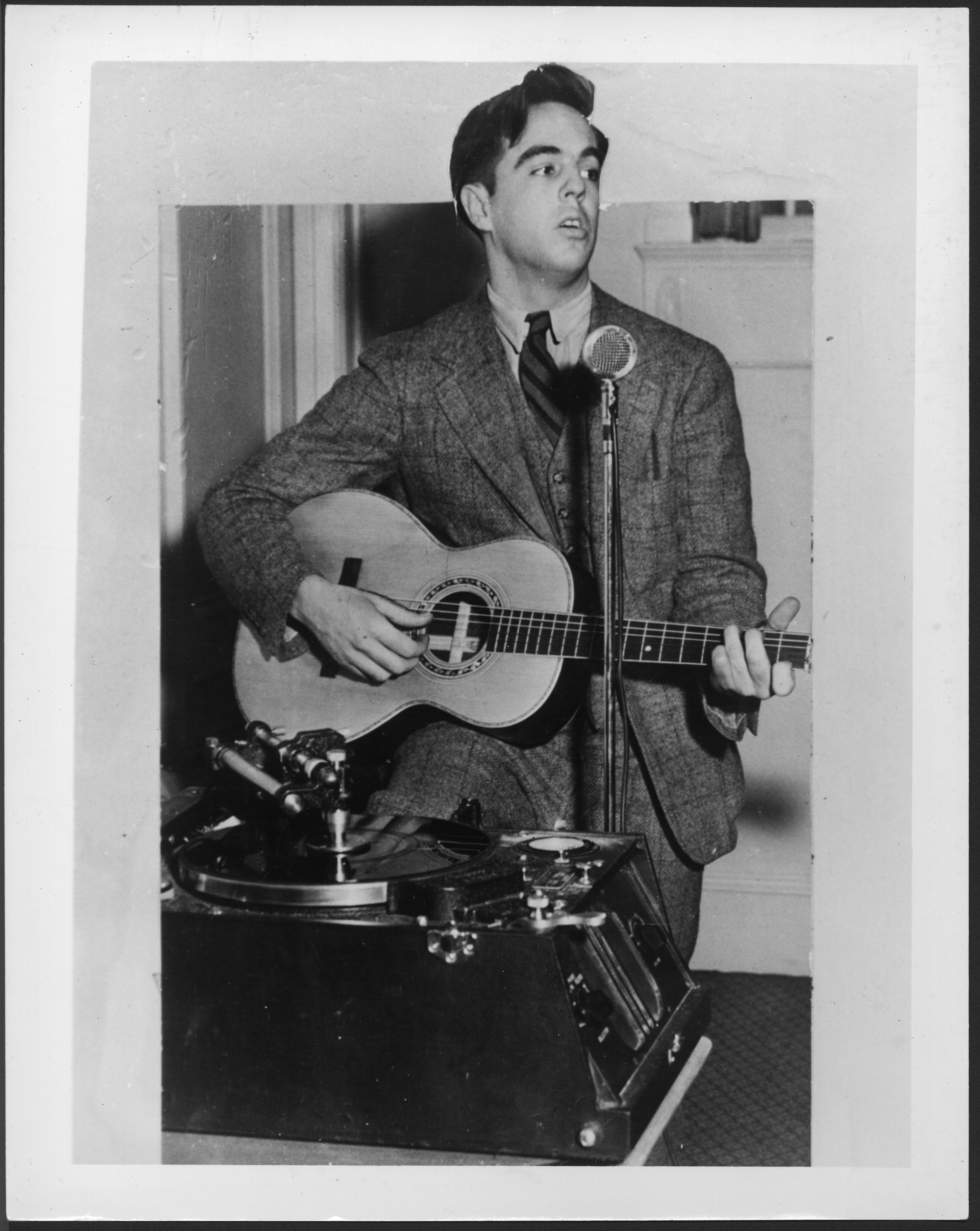Art Form: Documentation and collection of traditional music and folklife
Location(s): formerly of Safety Harbor, Florida
Alan Lomax

Portrait of Alan Lomax
“Michigan proved to be the most richly varied region for folk music that I had ever visited, combining as it did the lusty tradition of the Northern woods singer with an infinitely varied pattern of immigrant European, Indian, and even Appalachian and Southern Negro music.”
- Alan Lomax (1915-2002)
In 1937, Alan was named Assistant in Charge of the Archive of Folk-Song at the Library of Congress (now known as the American Folklife Center). Then in his early 20s, he was already an experienced fieldworker. Alan was aware of the rich musical culture of Michigan in the 1930s, and decided to travel there to document this boom. He originally intended to travel throughout the Great Lakes region, but was so impressed by what he found in Michigan that he stayed from August 1-November 1, 1938.
Alan’s trip generated highly valuable fieldwork and recordings that provide insight into the musical and cultural climate of Michigan in the late 1930s. He collected not only music transplanted from the Old Country, but also repertoire born of Michigan’s vibrant ethnic mix, created in boarding houses, lumber camps, on sailing ships, in shore-side saloons, and at community dances. The recordings encompass 10 different languages and represent 14 different ethnic groups: French Canadian, Polish, Hungarian, Rumanian, Ojibwe, Irish, Swedish, Croatian, Finnish, Italian, German, Serbian/Bosnian, African American, Lithuanian, and British/Anglo American. During a time when society embraced the melting pot ideology, the diversity of these 1938 recordings is remarkable.
Browse the 1938 collection on the Library of Congress website.
- Laurie Kay Sommers and Micah Ling, 2014
*This award was presented posthumously





